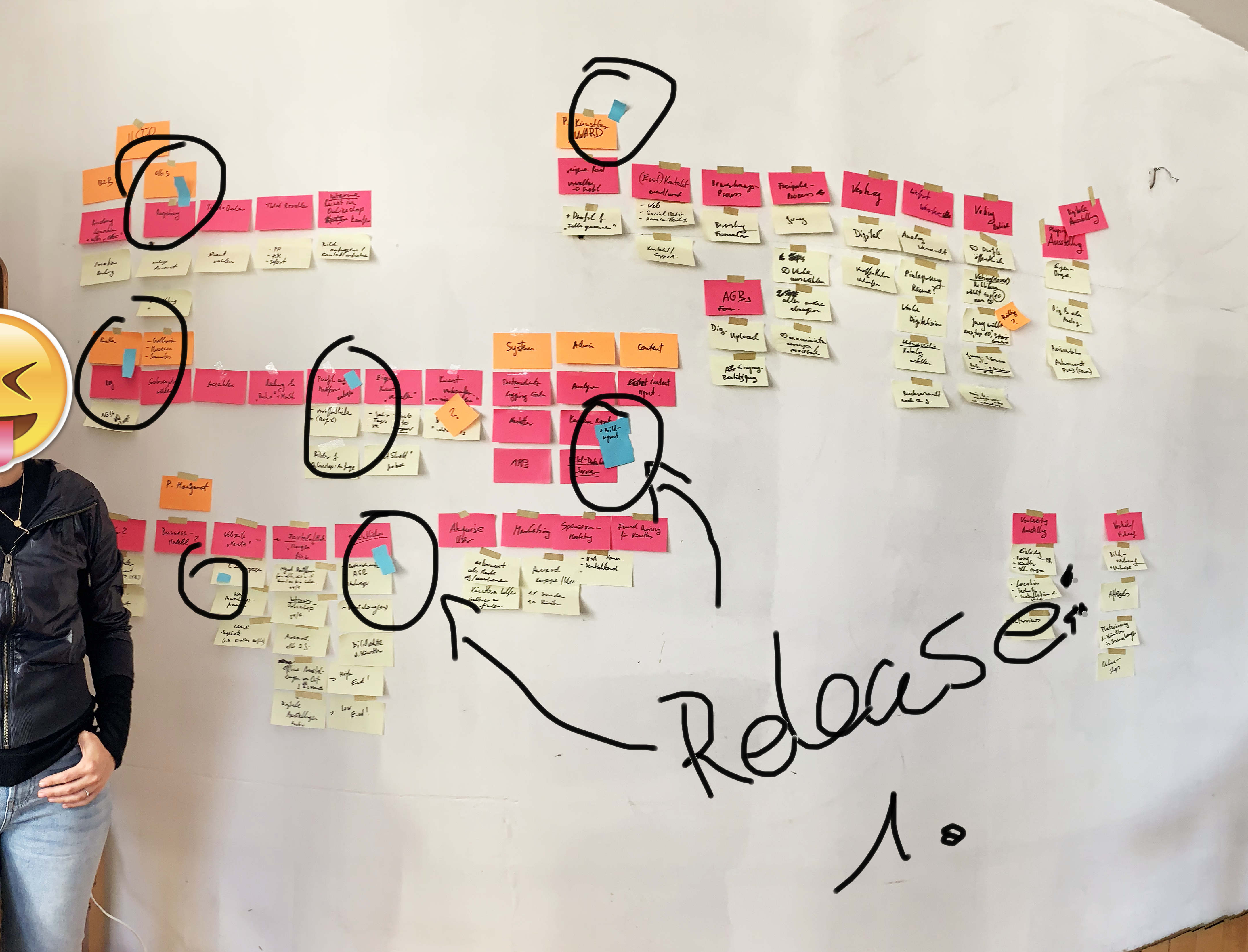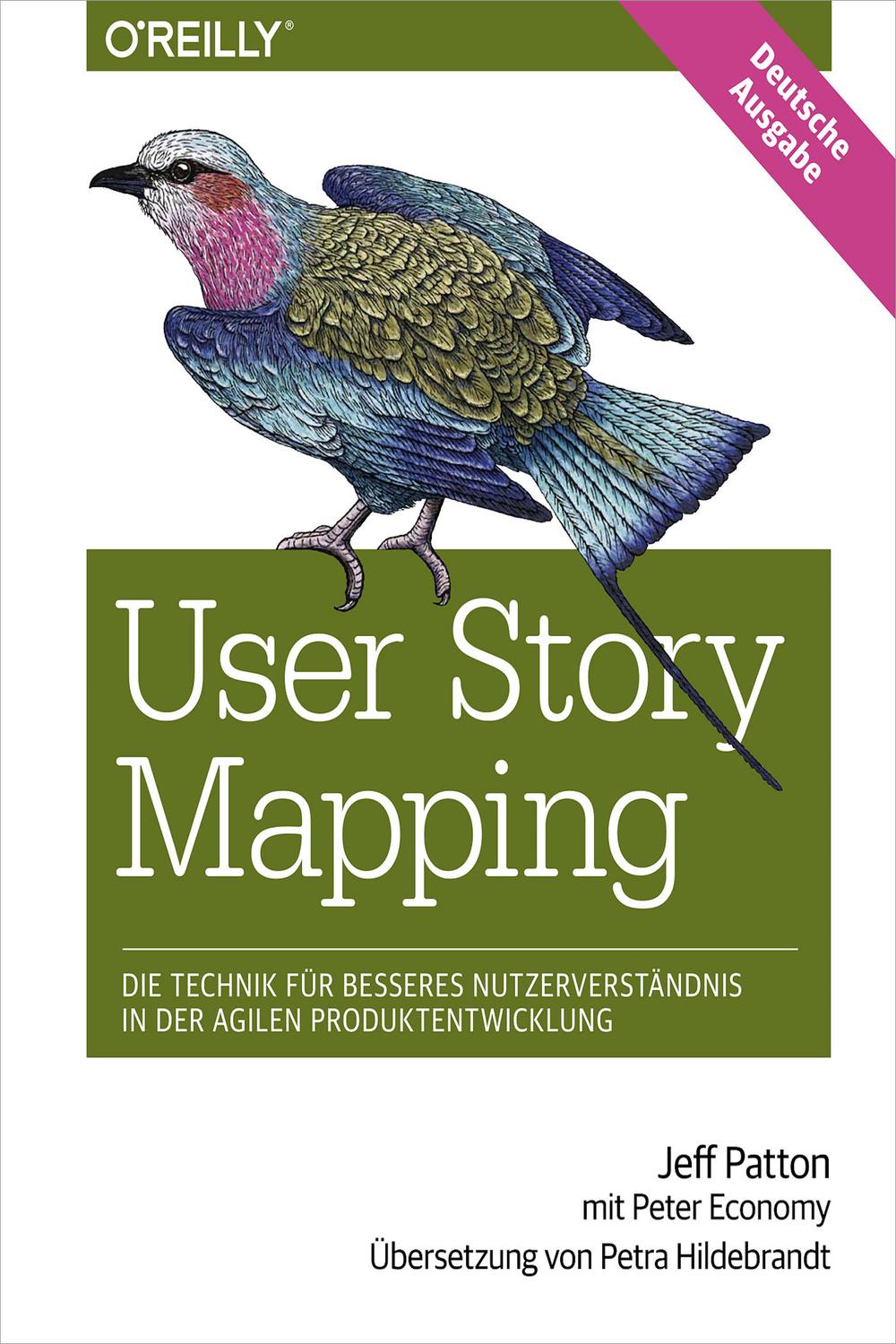User story mapping — Turn your users' story into an acclaimed bestseller

Ideas are the greatest driver of humanity. But what if too many ideas create chaos in your head? So
that the way to the goal seems unreachable.
If your big picture shatters into many parts and you lose sight of the big picture, you
should focus on the most important thing: What do your users actually want and how
can you develop your product in such a way that it puts a big grin on their face?
We are sure: If you tell the story of your users, you will write a success story! We will show
you how to create user stories and visualize them in an appealing way in a user story map
Many founders who come to us face the same problem: they bring brilliant ideas and
a great deal of ambition with them, but still have nothing tangible to show. Due to a
thousand thoughts buzzing around in the head, the project often gets off track and
the entire team loses sight of the big picture - the view of the big picture.
To prevent this from happening, we recommend our customers to adopt an agile approach. The
current project is divided into many small parts. These describe all pending tasks - always from
the point of view of your users.
The so-called user stories tell short stories that contain how the final product satisfies
the needs of the users and which features are needed to inspire your target group.
User stories enable the entire team to manage current tasks in a sprint in a structured manner,
to implement them in a more focused manner and thus to keep an eye on the whole.
User Story Mapping Method: Bye Bye Tunnelblick
In order to avoid the dreaded tunnel vision and to focus on individual features, agile coach Jeff Patton developed user story mapping.This method is a visualization of all connections of a project. The individual user stories are structured and prioritized in terms of time and content in such a way that they perfectly illustrate your vision.
Your job isn`t to build more software faster: it`s to maximize the outcome and impact you
get from what you choose to build.
These visualizations are intended to provide the entire team with a common understanding and a "roadmap" for achieving all relevant goals - simple, clear and easy to use.
Structure of the User Story Map: Go with the Flow
Of course, such a map looks different in every company. But the basic structure is mostly similar and is divided into a "two-dimensional map" whose items go beyond the limits of the one-dimensional backlog.The advantage over a one-dimensional backlog is that the relationships are clear and concise for everyone involved - even with a large number of entries. So everyone can take a look at the current status of the project at any time and keep an eye on the big goal. This way you get a feeling of what is still ahead of you and you can focus on the essential steps of your project.
A user story map usually consists of the following levels. Let's take Instagram as an example:
- User Activities: Activities that users do with the product in order to achieve their goal (e.g. posting a photo)
- User tasks in the backbone: individual steps of the user to complete activity (e.g. select photo, apply filter, edit photo, add description and hashtags, submit)
- User stories in the body: the way in which user tasks are completed (e.g. select a photo: select a photo from your own folder or take a photo with a camera, upload a photo)
The deeper the level, the more detail it goes into. Of course, it is always possible to switch back and forth between the individual levels, because a visual story map is not a static construct.
Approach to Visual Story Mapping: Are you ready for teamwork?
One thing that plays a prominent role in creating a User Story Map is teamwork. Everyone involved must pull together from the start. That doesn't mean you all have to agree, though. The more diversified the team, the better the result. However, the prerequisite is that you develop, supplement, prioritize and discuss the user story map together.Now arm yourself with post-its in different colors, pens, coffee and take a few hours for a joint user story mapping workshop. With this, it is important that you put yourself in the shoes of the customer and tell their story. So work on your buyer personas together again, because everyone should be able to identify with these user groups.
Creation of backbone
The basic structure of your user story map is the backbone. This includes all user activities and user tasks - i.e. tasks and stations that your user goes through when he is looking for your product, obtaining information about it or ultimately using it. So you start with the individual activities and tasks, which you write individually on colorful Post-Its.Into the deep
Next you go deep. Specifies the activities even further, defines the most important steps and maps them in chronological form.You can pin all the important details in the body of your map and find a suitable heading for each to maintain clarity.
User Story
Now you describe the customer journey of your customer in even more detail. Use the personas here to represent your users and assign them specific actions. With this you develop a detailed user story and fill the individual chapters of the user groups with life.Whether formulated in a general or specific way - the higher you place them on the map, the more important they are. The great thing about it: you can create different variants, rearrange the post-its again and again and enrich them with real feedback from your customers.
Release planning
After you have created the user stories, you split them up into their different release dates. A release should only contain the story that is necessary for the desired goal. Of course, how yours is also discussed here Minimal Viable Product (MVP) should look like:What problems is it supposed to solve? What added value does it have for your users? Where are the pain points and joys of your target group?
By answering these questions, collect all the basic requirements for the minimum survivable product and immortalize them on your map.
Of course, you should discuss each pin together and think about alternative
solutions. The user story map is not only a “map”, but also a basis for
discussion that is intended to focus on the user experience. You should
therefore definitely test all sketches, wireframes, mockups and features with
your users in order to set up the best possible MVP.
But your map is far from finished. During the course of development, you should
note all progress and insights on the user story map. In this way you are able
to define alternative tasks that also contribute to the achievement of
goals and increase user satisfaction - with less effort and resources.
So don't see the user story map as the final result, but as a process that adheres
to critical checks, changes and repetitions. True to the agile motto: Build.
measures. lean
Result of the User Story Map: a non-fiction bestseller
A user story map represents team building and progress. As you engage in conversation and gain a common understanding of the vision, your product will continue to evolve.Keep in mind, however, that you can only progress with the feedback of your customers. Speculations lead to nothing, which is why you absolutely have to conduct in-depth interviews, A/B testing or online surveys.
Makes every user story measurable and checks whether the story is true and not just pure fiction.
In this way you not only manage to visualize your project and create a common understanding, but also to find optimal solutions for even better product development.
Recommended book: User Story Mapping by Jeff Patton
In our approach, we at emit rely on an iterative workflow for every project kick-off. It is important to us to take all relevant steps together with our customers. In this way we ensure that nothing is forgotten during the workflow and that every release promises complete success. We also hand over the created and validated user stories to the concept and creative team, which uses the user story as a basis for further development work.Of course the book is on our desk "User Story Mapping: Discover the Whole Story, Build the Right" by Jeff Patton. Although this is not a classic guide to the creation the User Story Map, but rather describes how you create, design and improve your product in a customer-friendly way.
If you still need a guide for a user story mapping workshop, please write to us. Because you have the ideas and we know how to make them the biggest driver in your business again.
Sources:
1) Literature:User Story Mapping: Discover the Whole Story, Build the Right Product by Jeff Patton







